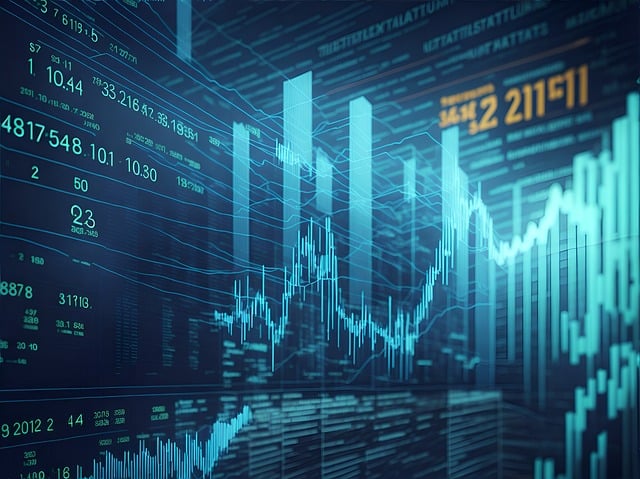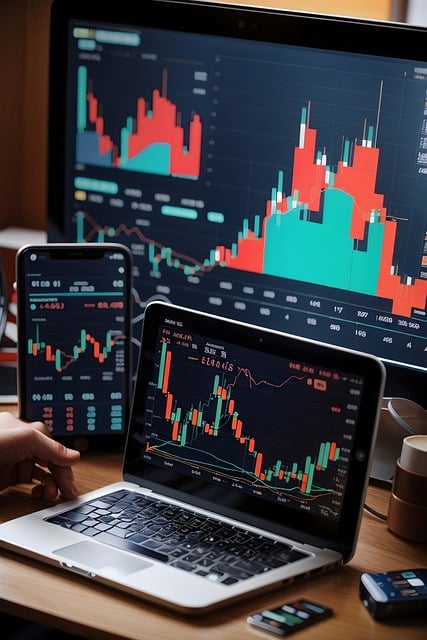The Rise of Automated Trading Programs: Revolutionizing Financial Markets
Author: Jameson Richman Expert
Published On: 2024-10-24
Prepared by Jameson Richman and our team of experts with over a decade of experience in cryptocurrency and digital asset analysis. Learn more about us.
In the financial landscape of the 21st century, technology's integration into trading practices has reached unprecedented levels. Automated trading programs, also known as algorithmic trading systems, have emerged as pivotal tools for both individual traders and institutional investors seeking a competitive edge. These systems utilize complex algorithms to execute trades at speeds and accuracies far beyond human capabilities. As we explore this transformative phenomenon, we will delve into how automated trading programs function, their advantages and drawbacks, and their impact on market dynamics. Furthermore, we will provide insights into the future of trading technologies.

Understanding Automated Trading Programs
Automated trading programs are software applications that use algorithms to analyze market data and make trading decisions. These systems can perform a variety of functions, from executing basic trades to managing complex trading strategies. The implementation of such programs has seen rapid growth, particularly with the increase of high-frequency trading (HFT).
How Do Automated Trading Programs Work?
At their core, automated trading programs operate on predefined criteria or strategies programmed by developers or traders. They can execute trades based on a multitude of variables such as:
- Market trends
- Technical indicators
- News events
Once these criteria are met, the programs can automatically place buy or sell orders without human intervention. This not only enhances trading efficiency but also minimizes the emotional factors that often impact human traders.
Types of Automated Trading Strategies
There are several types of strategies employed in automated trading. Some of the most common include:
- Trend Following: These systems identify and follow trends in price movements.
- Mean Reversion: This strategy assumes that prices will revert to their mean over time, thus providing trading opportunities.
- Arbitrage: Traders exploit price discrepancies of the same asset across different markets.
- Market Making: These algorithms provide liquidity to the market by simultaneously placing buy and sell orders.
The Rise of High-Frequency Trading
High-frequency trading is a subset of automated trading characterized by high speed and high turnover rates. HFT firms utilize powerful computing technology to execute thousands of trades in fractions of a second. This method has gained significant traction in recent years, leading to a paradigm shift in how markets operate.
Advantages of Automated Trading Programs
As the world of finance continues to evolve, the advantages of adopting automated trading systems have become apparent. Here are some of the key benefits that have contributed to their growing popularity:
Increased Efficiency
Automated trading programs can analyze vast amounts of market data and execute trades faster than any human trader. This efficiency leads to better price execution and lower transaction costs.
Emotionless Trading
One of the most significant advantages of automated trading is its ability to remove emotions from trading decisions. Humans are susceptible to biases and impulsive decisions that can skew trading outcomes. By contrast, automated programs strictly adhere to their programmed rules, ensuring consistent execution of trading strategies.
Backtesting Capabilities
Traders can backtest automated trading strategies using historical data to evaluate their potential effectiveness before deploying them in real-time markets. This provides a clear insight into how a strategy might perform under various market conditions.
Diversification of Trading
Automated trading allows traders to take advantage of multiple trading opportunities across various markets simultaneously. This diversification minimizes risk and enhances the potential for profit.
Drawbacks of Automated Trading Programs
While the benefits of automated trading programs are substantial, they are not without drawbacks. Awareness of these potential issues is critical for traders considering automating their trading strategies.
Market Manipulation Risks
The prevalence of high-frequency trading has been criticized for contributing to market volatility and manipulation. Certain trading strategies can create artificial liquidity, leading to price distortions that can adversely affect less sophisticated investors.
Technical Failures
Automated trading systems are not infallible. Technical glitches, software bugs, and connectivity issues can lead to significant financial losses. Traders must recognize the importance of regularly monitoring their automated systems to avoid unforeseen consequences.
Over-Optimization
There is a risk of over-optimizing a trading strategy based on historical data, leading to a system that performs well in backtests but fails in real-world trading scenarios. This phenomenon is known as “curve fitting” and is something traders must be cautious about.

Impact on Market Dynamics
The rise of automated trading programs has had a profound impact on financial markets. Their speed and efficiency have changed how trades are executed, making markets more liquid yet also potentially more volatile. The interaction between human traders and algorithms has created a complex trading ecosystem, prompting regulatory scrutiny and discussions around the future of trading systems.
Market Liquidity
The increased participation of automated trading has generally improved market liquidity. More participants lead to tighter spreads and more efficient pricing, benefiting all market players.
Flash Crashes
However, the very nature of high-frequency trading has led to instances of ‘flash crashes,’ where rapid selling leads to significant drops in market prices. These events highlight the potential risks associated with algorithmic trading, prompting debates about the need for regulatory measures to mitigate such occurrences.
Future of Automated Trading Programs
As technology continues to advance, the future of automated trading programs seems promising. Emerging trends and innovations will shape this landscape in several ways. Potential developments include:
Artificial Intelligence and Machine Learning
The integration of artificial intelligence (AI) and machine learning (ML) into automated trading programs is a game-changer. These technologies can analyze vast datasets in real-time, adapt to changing market conditions, and develop new trading strategies autonomously. This evolution may lead to even greater efficiencies and trading capabilities.
Enhanced Regulation
As automated trading programs proliferate, regulators are likely to increase scrutiny to ensure fairness and transparency in markets. This might mean implementing safeguards that prevent extreme volatility and protect retail investors from potential manipulative practices.
Increase in Retail Participation
The democratization of trading technology will likely lead to an increase in retail trader participation. As more individuals gain access to sophisticated trading systems, their influence on market dynamics may grow.
Conclusion
In conclusion, the advent of automated trading programs marks a significant shift in the financial trading landscape. While they provide numerous advantages such as efficiency, emotionless trading, and the ability to backtest strategies, they also come with inherent risks, including market manipulation and technical failures. As we look ahead, the integration of AI and ML is bound to further revolutionize this space, though regulatory measures will play a crucial role in maintaining market integrity.
In my opinion, while automated trading represents an incredible technological advancement, we must remain vigilant about the potential pitfalls it introduces. Striking a balance between exploiting these technologies and ensuring a fair trading environment will be essential for the continued health of our financial markets.